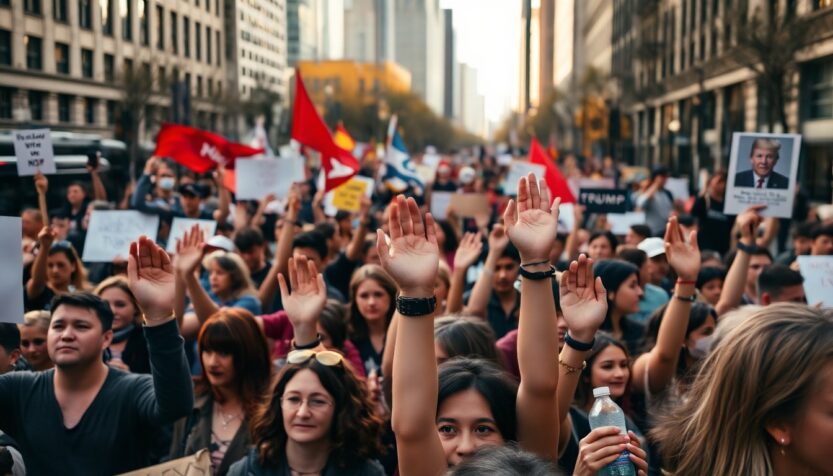On October 18, a wave of protests swept across the globe as individuals gathered for the second installment of the No Kings demonstrations against President Donald Trump. This latest rally saw participation from an estimated seven million people across more than 2,600 events in the United States alone, significantly surpassing the turnout of five million from a similar protest held in June.
In New York City, where Trump spent his formative years, over 100,000 demonstrators filled the streets. The focal point of the gathering was Times Square, which buzzed with energy as supporters voiced their dissent. In contrast, a small counter-protest took place outside Trump Tower, where a handful of supporters displayed a banner proclaiming ‘Trump for King,’ reflecting a stark division in public sentiment.
Protests in major cities
The protests were not confined to New York; they resonated throughout various major cities in the U.S. For instance, Washington, D.C. witnessed a significant turnout, with many participants being federal employees affected by the ongoing government shutdown. During the rally, Senator Chris Murphy addressed the crowd, emphasizing that Trump is implementing a systematic plan to undermine democratic institutions and civil liberties.
Voices of concern
Murphy asserted, ‘While he may appear powerful, the truth is that he has not triumphed over the will of the people.’ Alongside him, Senator Bernie Sanders urged Republicans to return from their extended recess and end the shutdown that has left many Americans in limbo.
Demonstrators also emerged from smaller towns across the Midwest, where Trump had previously garnered substantial support in the 2024 elections. In South Bend, Indiana, over 6,000 individuals rallied against a Republican-led redistricting initiative. Similarly, in Kansas City, Missouri, crowds gathered to express their concerns regarding the aggressive tactics employed by ICE. Even in Wyoming, a state known for its strong Republican leanings, approximately 400 people braved chilly weather to voice their dissent in Cheyenne.
California’s dual purpose protests
California proved to be a hotbed of activism, with many protests serving a dual purpose: opposing Trump’s presidency while simultaneously advocating for Proposition 50. This proposed ballot measure aims to redraw electoral districts in favor of Democratic candidates. In San Francisco, protesters formed a human banner along the coastline, urging residents to support the initiative, while similar sentiments echoed in Los Angeles and other Californian cities.
Reactions from Republican leaders
Despite the overwhelming turnout, few Republican officials chose to engage with the protests directly. Speaker Mike Johnson dismissed the events as a ‘hate America rally,’ while a White House representative, Abigail Jackson, expressed indifference, stating, ‘Who cares?’ when questioned about the protests.
However, the sentiments expressed by protester Anthony Lee, an FDA employee, captured the essence of the movement. He conveyed the importance of public participation, stating, ‘The more people we can mobilize, the clearer the stakes become. We want to encourage civic engagement to combat the dismantling of our governmental structures and public services.’
Ultimately, the No Kings protests illustrated a significant mobilization of citizens united against perceived threats to democracy and civil rights. As voices from diverse backgrounds and regions converged, the message became clear: a considerable faction of the American populace is calling for accountability and change.






